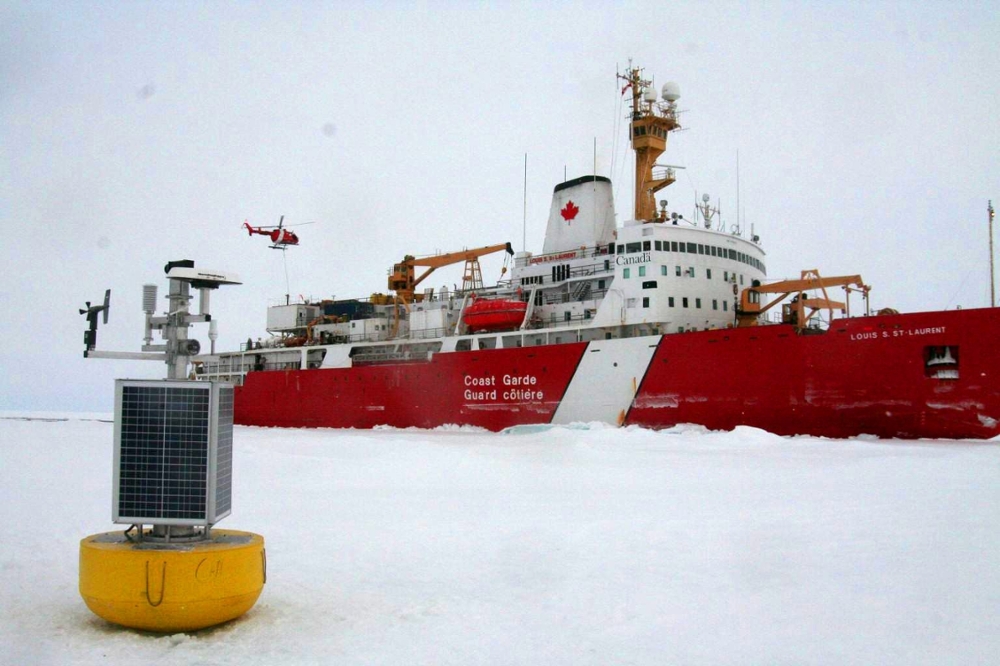
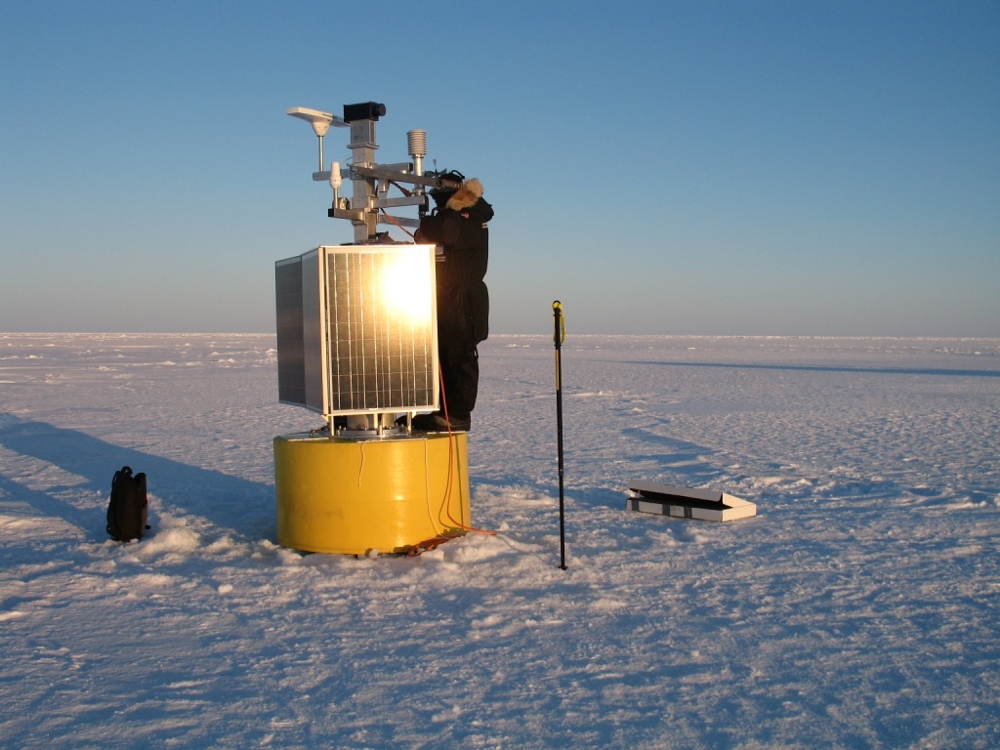
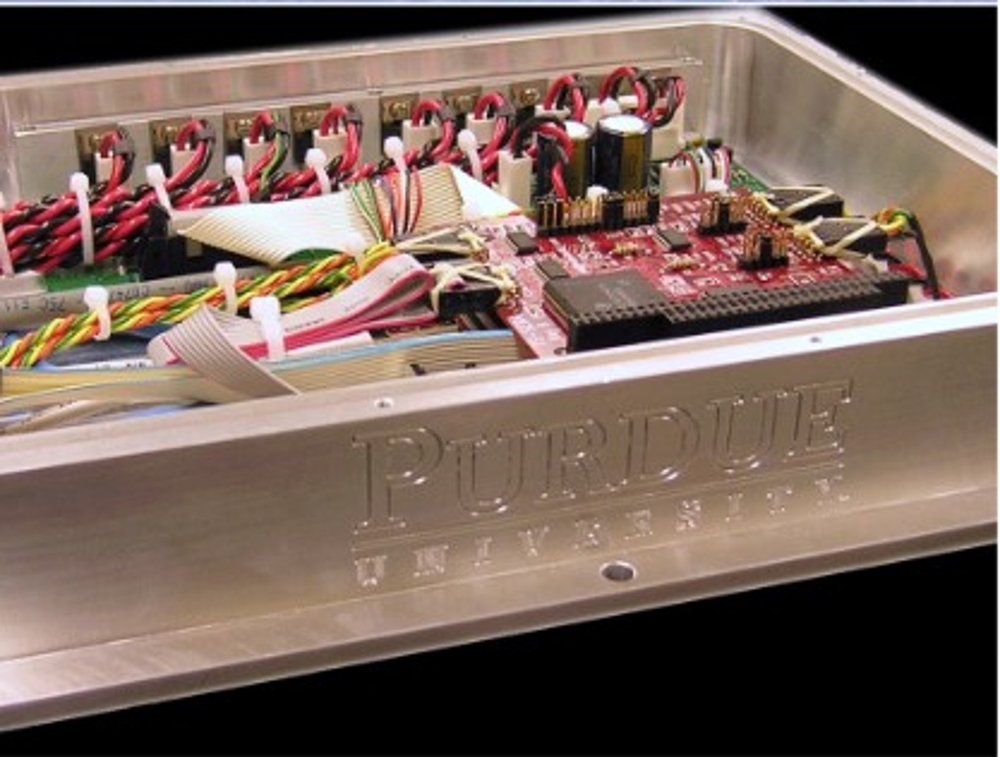
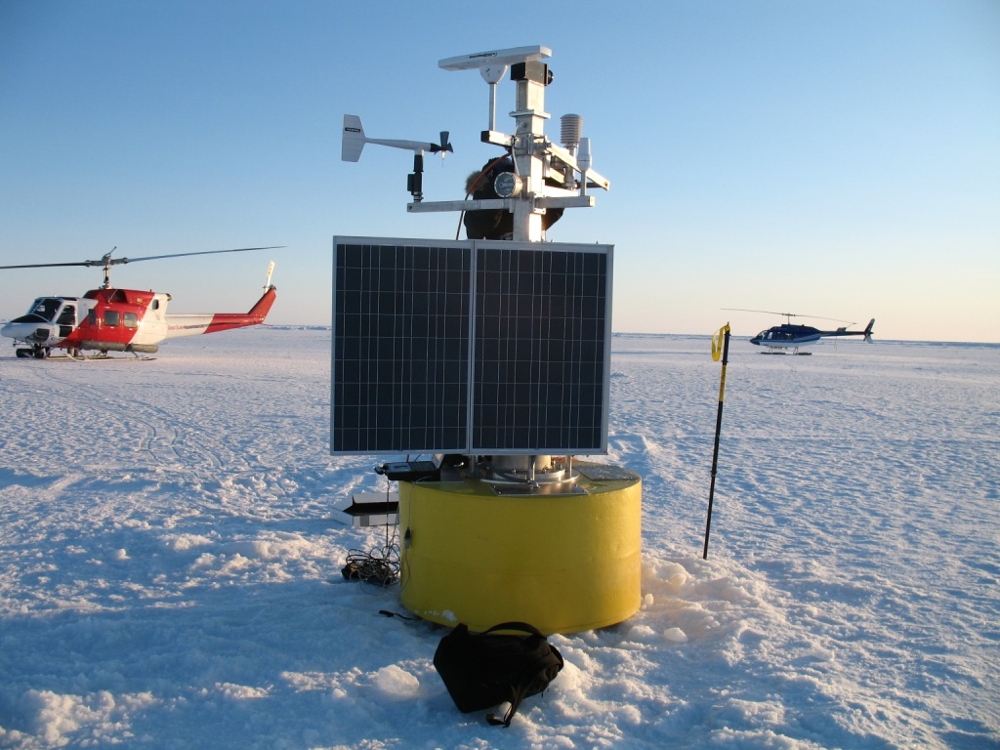
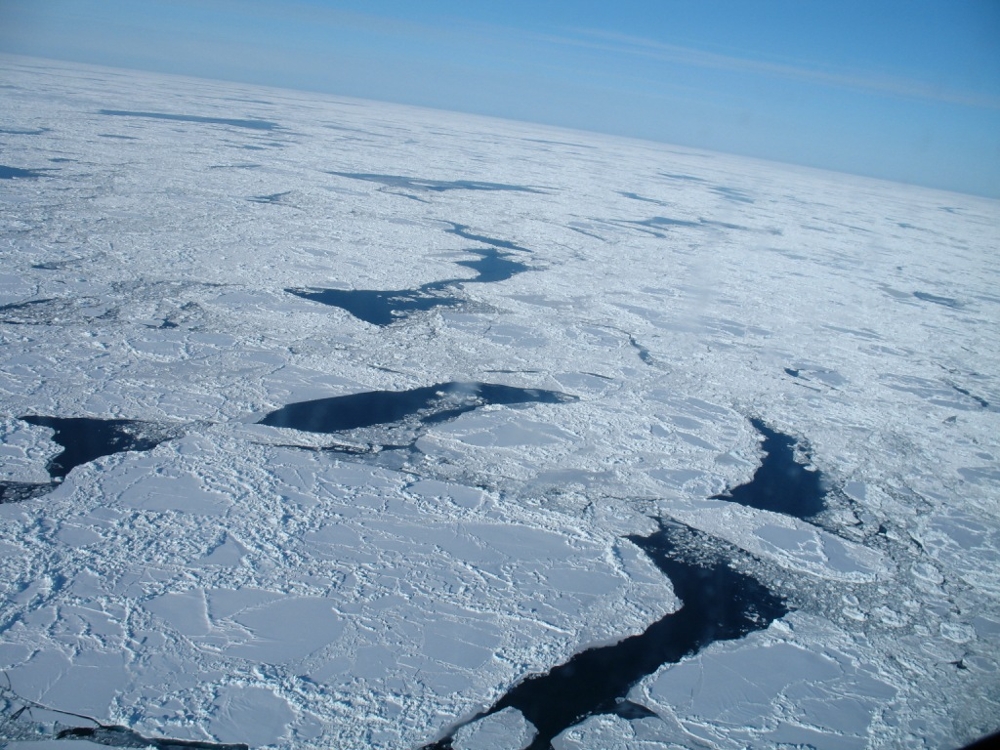
O'Buoy Project
O-Buoy is an autonomous, multi-instrument, sea-ice tethered buoy with the ability to measure surface level ozone, carbon dioxide, bromine oxide, meteorological conditions, and its own location using a GPS device.
Narrative provided by Dr. Paul Shepson and Dr. John Halfacre:
"Arctic sea ice has undergone a dramatic decline in recent years, with a well documented retreat of the summer ice cover, a general thinning, and a transition to a younger ice pack, more vulnerable to melting. These changes profoundly affect the physical, biological, and chemical properties of the ocean – ice – atmosphere system. The Arctic Ocean is an austere and hostile environment that is remote and difficult to access. These conditions make any scientific observations difficult, but pose particular difficulties for autonomous sensors. Most long-term Arctic atmospheric observations, and in particular most chemical concentration data, have been collected at terrestrial bases around the periphery of the Arctic Ocean, mostly leaving oceanic- and sea ice-based locations without any observations. While O3 and CO2 are two of the most important greenhouse gases in our planet, there are very few observations in the very cold Arctic Ocean region. Increased atmospheric CO2 causes ocean acidification that has already been detected in the Arctic Ocean. BrO causes extraordinary ozone decreases and mercury deposition that occurs during polar springtime, with attendant significant implications for human and ecosystem health in the Arctic region. We created the O-Buoy project, in collaboration with scientists from the Bigelow Laboratory (Paty Matrai, lead PI), Purdue (Paul Shepson), U of AK, Fairbanks (Bill Simpson), the Cold Regions Research Environmental Laboratory (Don Perovich), MBARI (Francisco Chavez), and Environment Canada (Jan Bottenheim), to meet the challenge of conducting autonomous measurements of O3, CO2, and BrO from the Arctic Ocean surface. With significant collaborative effort from JAFCI, we built 15 atmospheric chemistry O-Buoys, with the latest in power management, instrumentation, and instrumentation control to develop a robust, unattended (that is, not serviced), self-contained, weather-tight, self-powered, ice-tethered buoy, to produce unprecedented data. These buoys were deployed in the Beaufort Gyre (13), the East Siberian Sea (3), and at or near the North Pole (2) for a total of 18 deployments (including three recovery/re-deployments). See pic at right showing a deployment in the Beaufort Sea. They were built to operate for up to 2 years; the average deployment length was 1 year, two O-Buoys sampled for over 2 years, while some deployments were intentionally shorter to enable recovery and redeployment. The Arctic Ocean network of O-Buoys observed atmospheric O3, BrO, and CO2 over the full annual cycle, producing high quality data at climatically important, but logistically dangerous, locations. Daily data transmissions were by satellite communication from the O-Buoys to a home ftp site where raw data were archived and displayed for immediate observation. Throughout the project, data from the O-Buoys were initially quality-controlled by automated processing, with preliminary data available on a regular basis. At the end of each deployment, data were re-processed and submitted to the NSF Arctic Data Center. In addition, position and meteorological data were submitted to the World Meteorological Organization’s Global Telecommunication System in near-real time for weather prediction and model validation. The data collected by this network of O-Buoys, coordinated and clustered with other buoys in automated drifting stations, is allowing the scientific community to first observe and, next, better understand how changes in Arctic sea ice extent, thickness and surface affects atmospheric chemical composition and processes. The O-Buoy deployments have greatly enhanced the capability of the Arctic Observing Network to quantify seasonal and interannual variability in a fast changing and highly regionally variable ice field. The exceptional 8-year data set enabled discovery about the unique spatial and temporal characteristics of atmospheric chemistry above the sea ice, as described in multiple publications. It couldn't have been done without JAFCI!"
- A Look Inside the Amy Facility
- 8-Channel RF Signal Generator
- Apple Pencil Charger
- Photochemical Reactor
- RCF Controller
- High Bandwidth 16-Channel PMT Amplifier
- Microsecond Raman imaging might probe cells, organs for disease
- O'Buoy Project
- ALAR
- Argos Data Collector
- Vertical Air Profiler
- Triboluminescence
- Flow Reactor
- TRAC
- E-Beam Project
- Coiled Tubing Reactor
- Carbon Fiber Tubing
- Cryogenic Cooling Stage
- Photomultiplier Tube Power Supply
- Cold Ion Spectroscopy
- Mass Spec Solids Probe
- Spherical Void Electrodynamic Levitator
- Linear Rail Fatigue Tester
- Florescence Imaging System
- Pulse Stretching Amplifier
- Modular Low-Cost Photoreactor Chamber